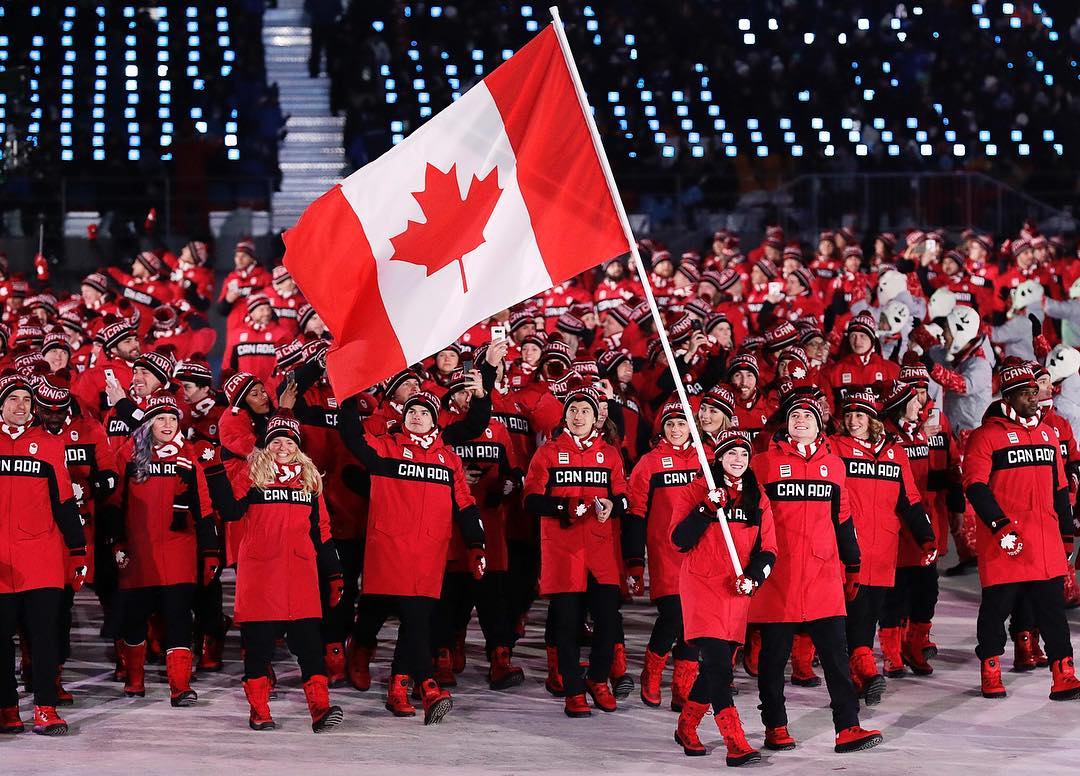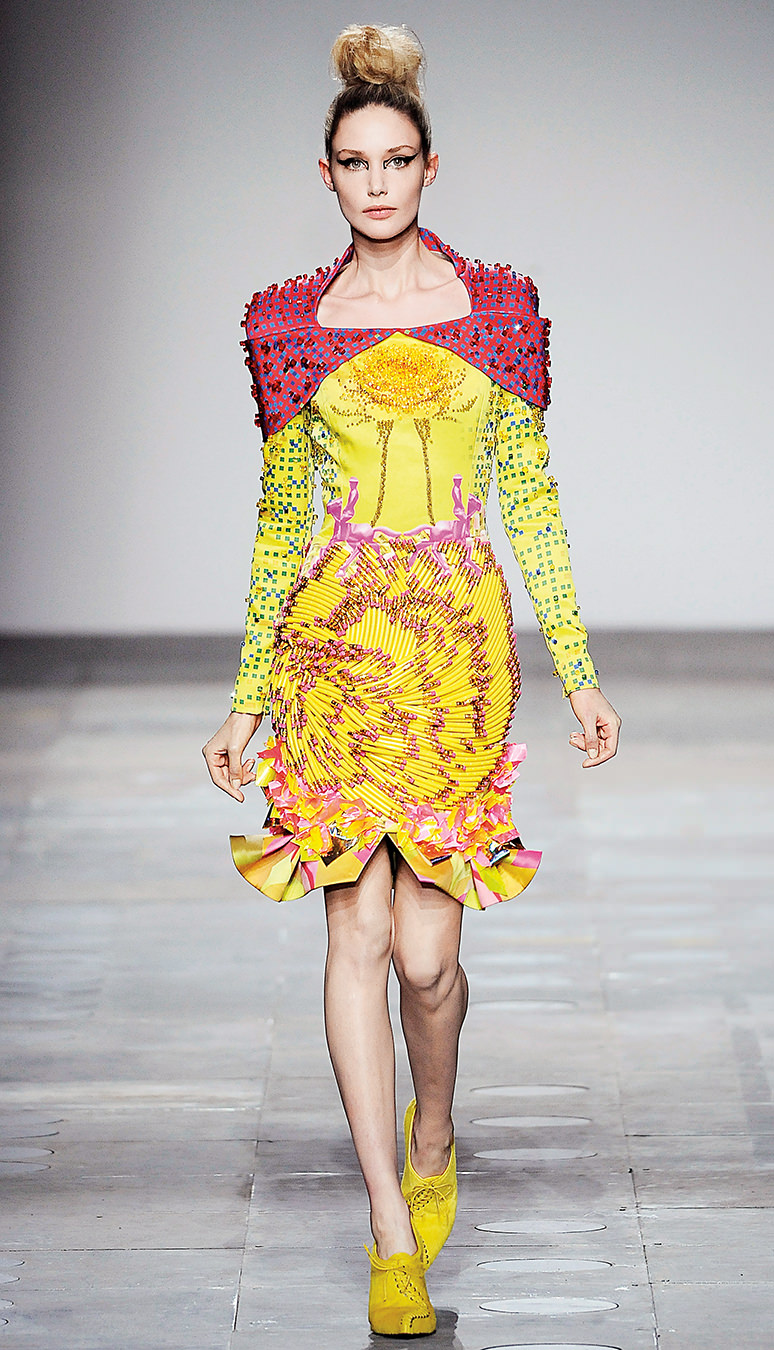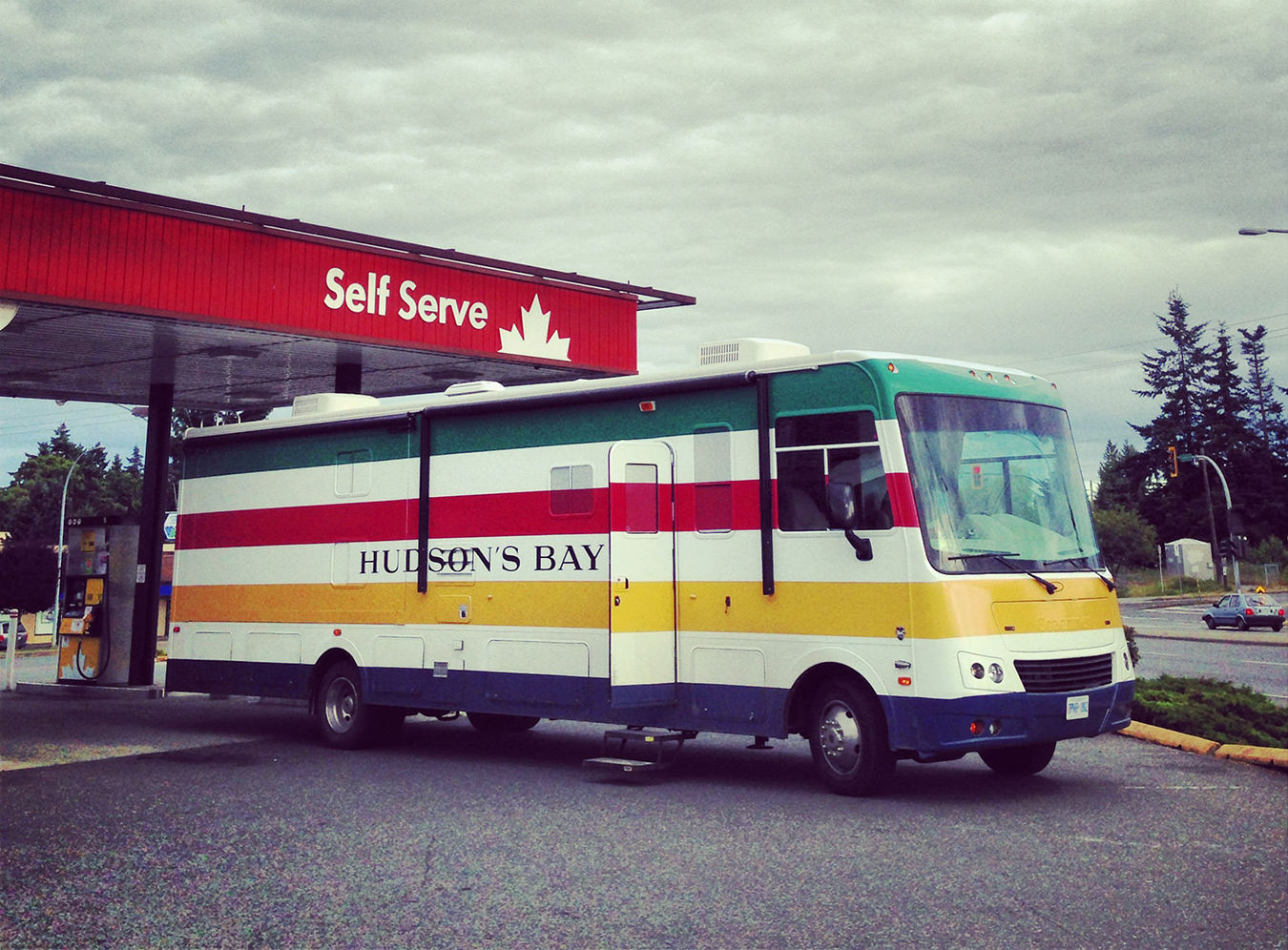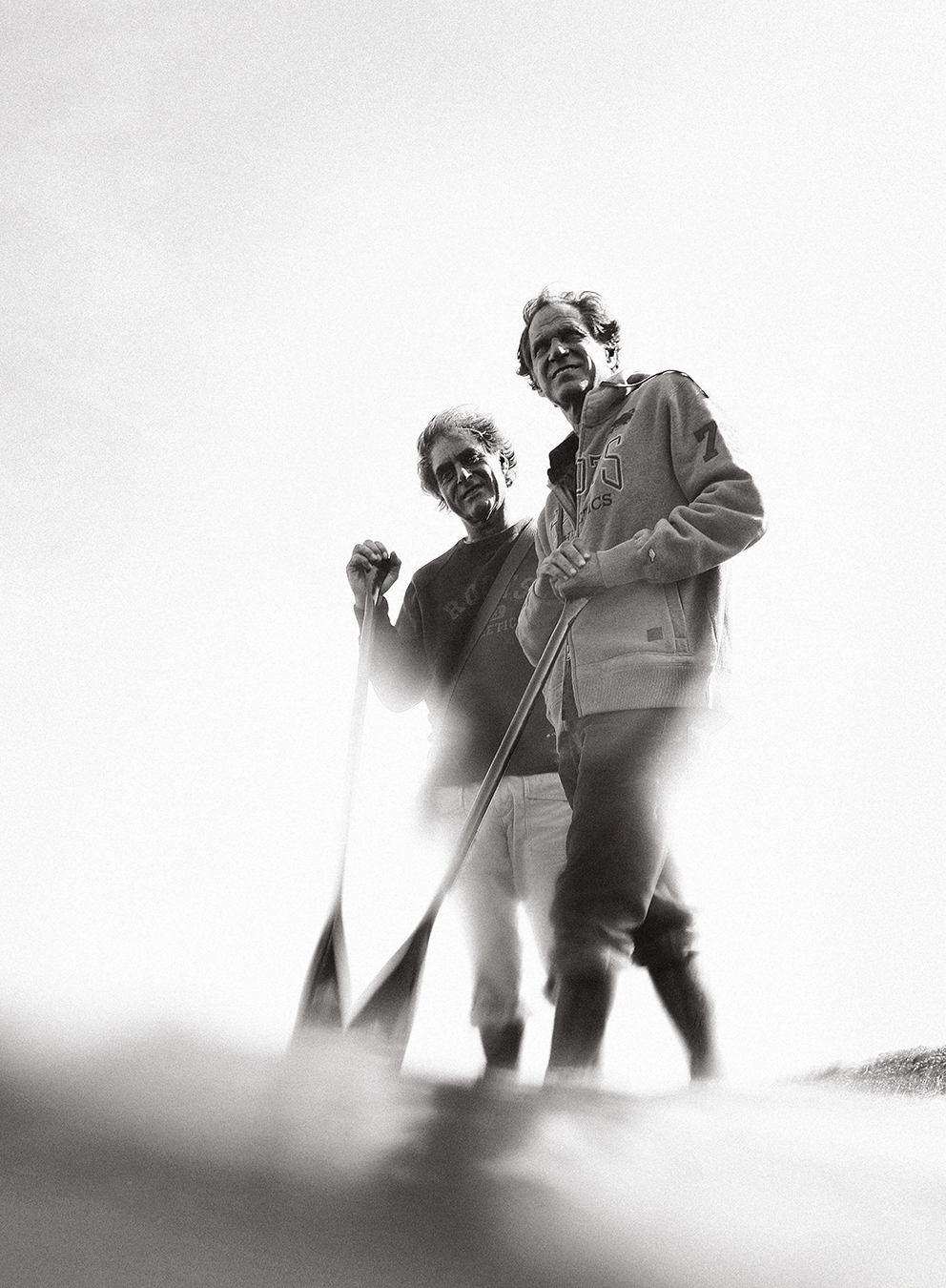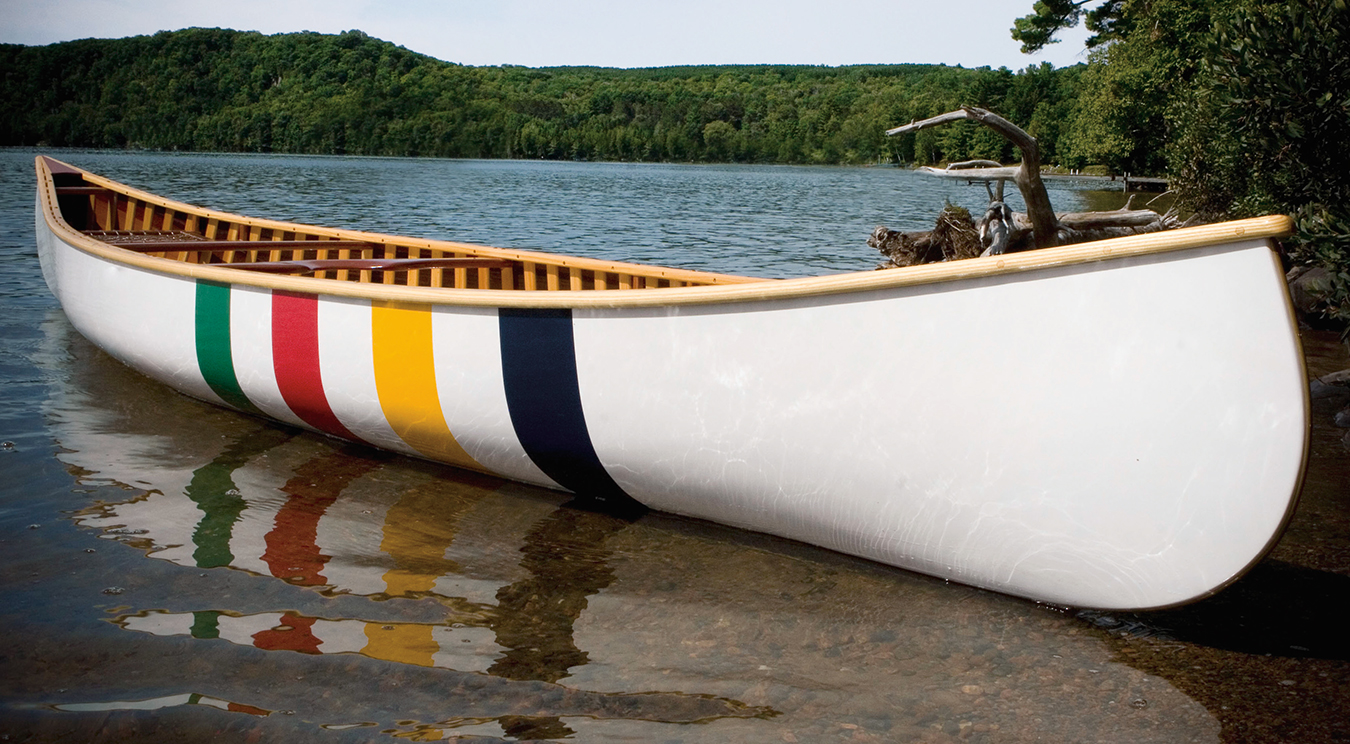Pivotal Moments in Canada’s Legendary Olympic Style
Runs and runways.
Aside from the thrill of watching the events, one of the most anticipated and iconic aspects of the Olympics is the opening ceremony. It’s not only steeped in a tradition that nods to the legacy of the Games but is also a prime opportunity for participating nations to represent their culture on the world stage.
For most, this parade is a standard ritual where the athletes of each country dress in national garb as they proudly walk with their flag through the crowd, but for Canada, it is a sort of runway as well.
We’ve seen everything from Mountie-inspired jackets to western fringe to bucket hats and leather varsity jackets—all designed in the signature Canadian red, of course. When you look for our team in the crowd, it’s never hard to miss.
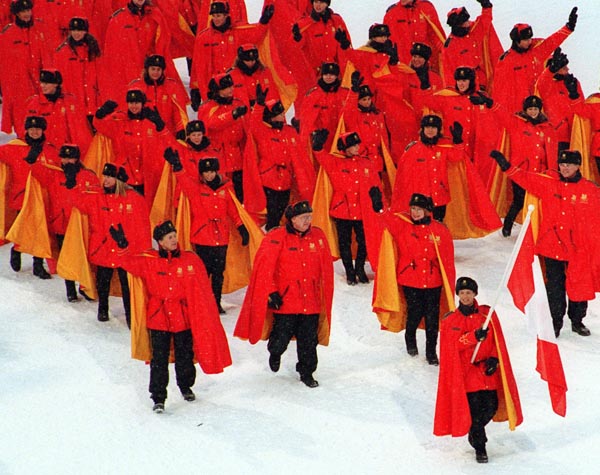
1994 Lillehammer Olypmics via Library and Archives of Canada.
“There is something quite special that I can’t really explain when an athlete receives their official Team Canada collection at the Olympics. It is a symbol of pride and honour of representing your country on the biggest stage,” says Erica Wiebe, Olympic wrestling champion and HBC Athlete Bursary recipient.
These collections are not only important on the world stage but also have a powerful influence on Canadian culture. Once the collection is announced, the entire line is released, and for months leading up to the games and years after, you’ll spot iconic Team Canada pieces on the streets from coast to coast.
Athletic-wear-turned-streetwear is one of Canada’s claims to fashion fame, so below, we take a look at Olympic collections through the years and pivotal moments that put Canada in the lead for a gold medal in fit, style, and team spirit.
The Beginning
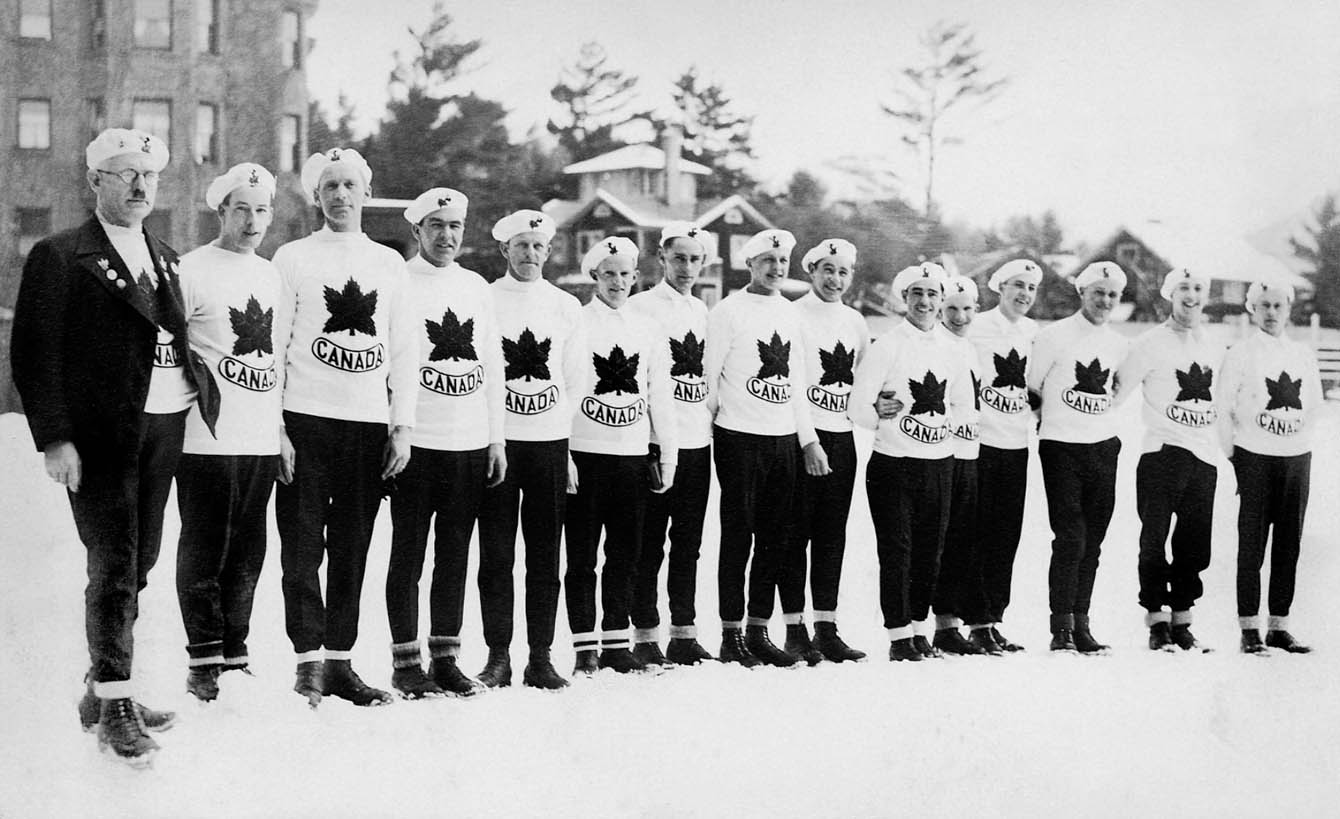
Men’s ski team 1932, Lake Placid.
According to the Canadian Encyclopedia, Canada first entered the Olympics in the summer of 1908 and participated in the inaugural Winter Games in 1924, winning the first Olympic gold medal for ice hockey. Since then, Canada has dominated the Winter Olympics in many categories, winning 199 medals, ranking fifth in the total number of medals won at the Games since 1924
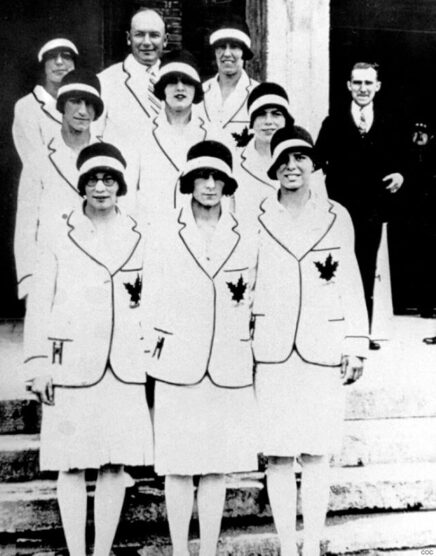
Amsterdam 1928, via Huffington Post.
From the beginning, Team Canada’s attire was simple yet chic, boasting an elevated-casual vibe with a consistent maple leaf emblem always proudly incorporated.
Hudson’s Bay Design Influence
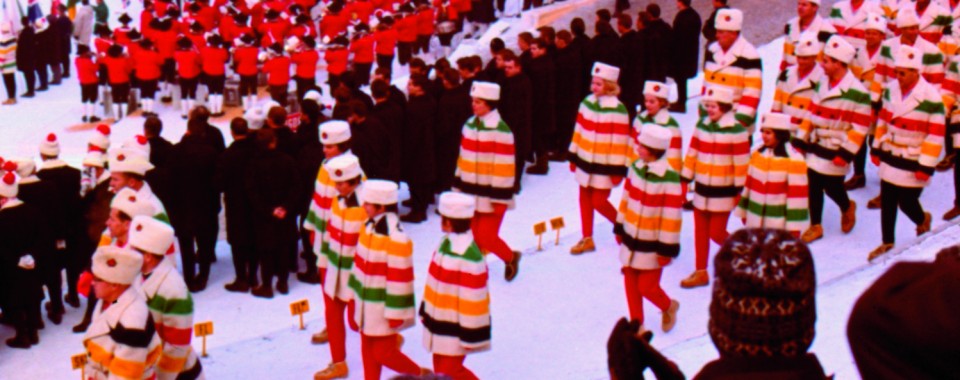
1964 Tokyo Summer Olypmics via Hudson’s Bay.
Canada’s original department store, Hudson’s Bay Company, came on the scene in 1936 for the Games in Garmisch-Partenkirchen, Germany, outfitting Team Canada in the Bay’s classic Point Blanket Coat and debuting the famous red mittens. After a few years of making an appearance at the games, this multistripe jacket became the official uniform of the Canadian Winter Olympic team at a number of Games and was universally identified as the Hudson’s Bay Coat.
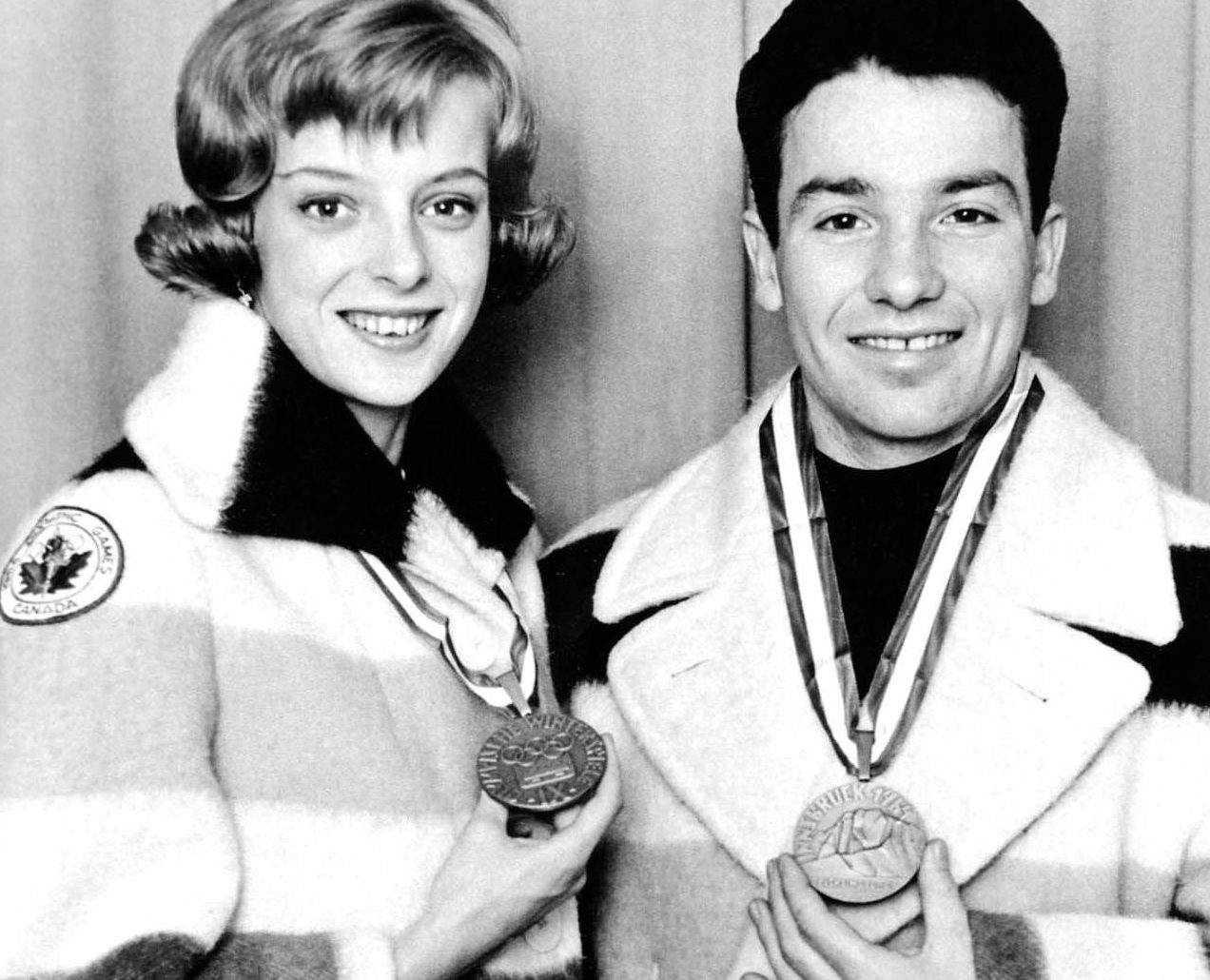
Debbie Wilkes and Guy Revell 1964 Innsbruck winter Olympics.
Since then, HBC has designed many of the Team Canada Collections throughout the ’60s, ’80s, and much of the 2000s, and even signed a sponsorship agreement as Team Canada’s Official Outfitter from 2013 to 2020. Much like mainstream fashion, collaborations have been all the rage, and in recent years HBC has worked with notable Canadian designers such as Dsquared2, Drake General Store, Peace Collective, and Herschel.

Collaboration created with Dsquared2 for Rio 2016.
Team Canada Goes Western
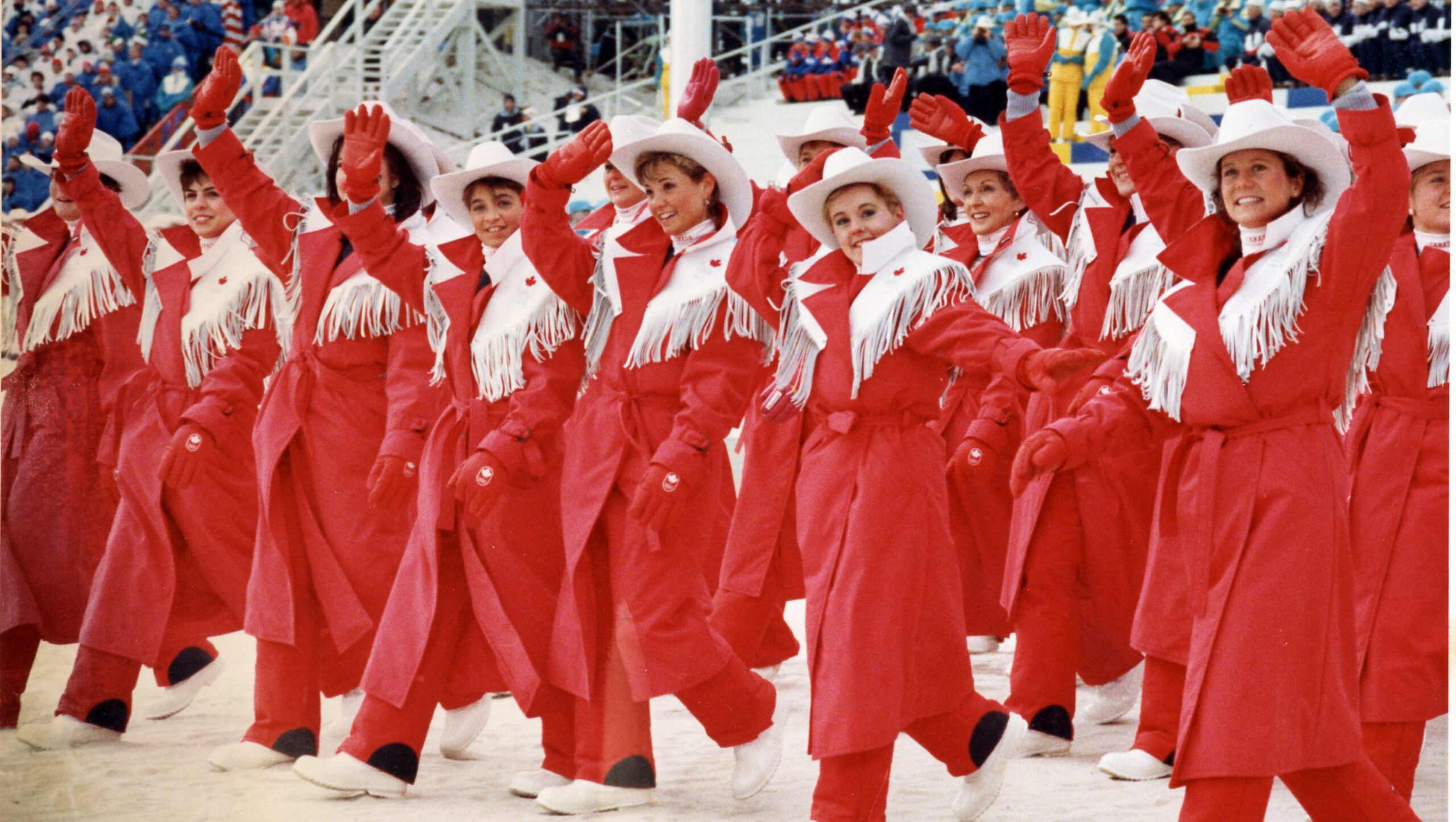
Photography by Glen Olsen via Winnipeg Free Press.
It’s not surprising that this was the official Team Canada uniform for the 1988 Olympics held in Calgary. Sunice was the official supplier, outfitting the team in western fringe-trimmed coats and authentic white Stetson cowboy hats. This look is still known as one of the most memorable in Olympic history to date, though today, we don’t know if that is a good thing.
The Roots Era
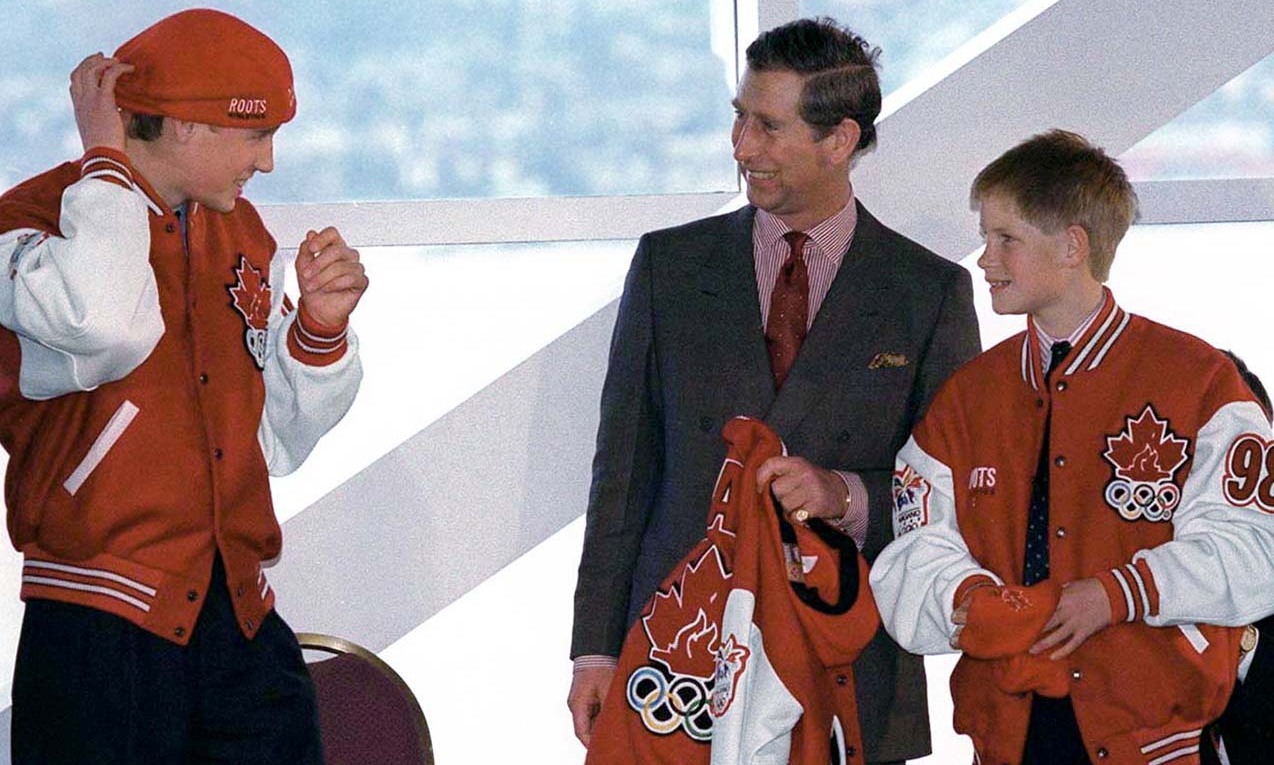
British Royal family in 1998 Team Canada gear. Photo via Hello! Canada.
In 1998 Roots won the bid to design the Team Canada collection for the Nagano Winter Games and quickly became a brand synonymous with the team. Its initial design featured a backward red poorboy cap and and intricate leather varsity jacket made in the Toronto Roots leather factory. After the games, both items spiked in popularity and were even worn by celebrities such as Prince William, Céline Dion, and Spike Lee.
After the success of 1998, the fashion revolution for Team Canada had officially begun, and Roots continued to design the official team wear in 2000, 2002, and 2004, along with commissions from the United States and Great Britain. This is when Team Canada’s uniforms began making their way into Canadian streetwear with a separate, slightly more casual line that included branded parkas, hats, the comeback of the headband, sweaters, sweatsuits, and ode to Canada’s heritage maple leaf design.
The Red Mittens Campaign
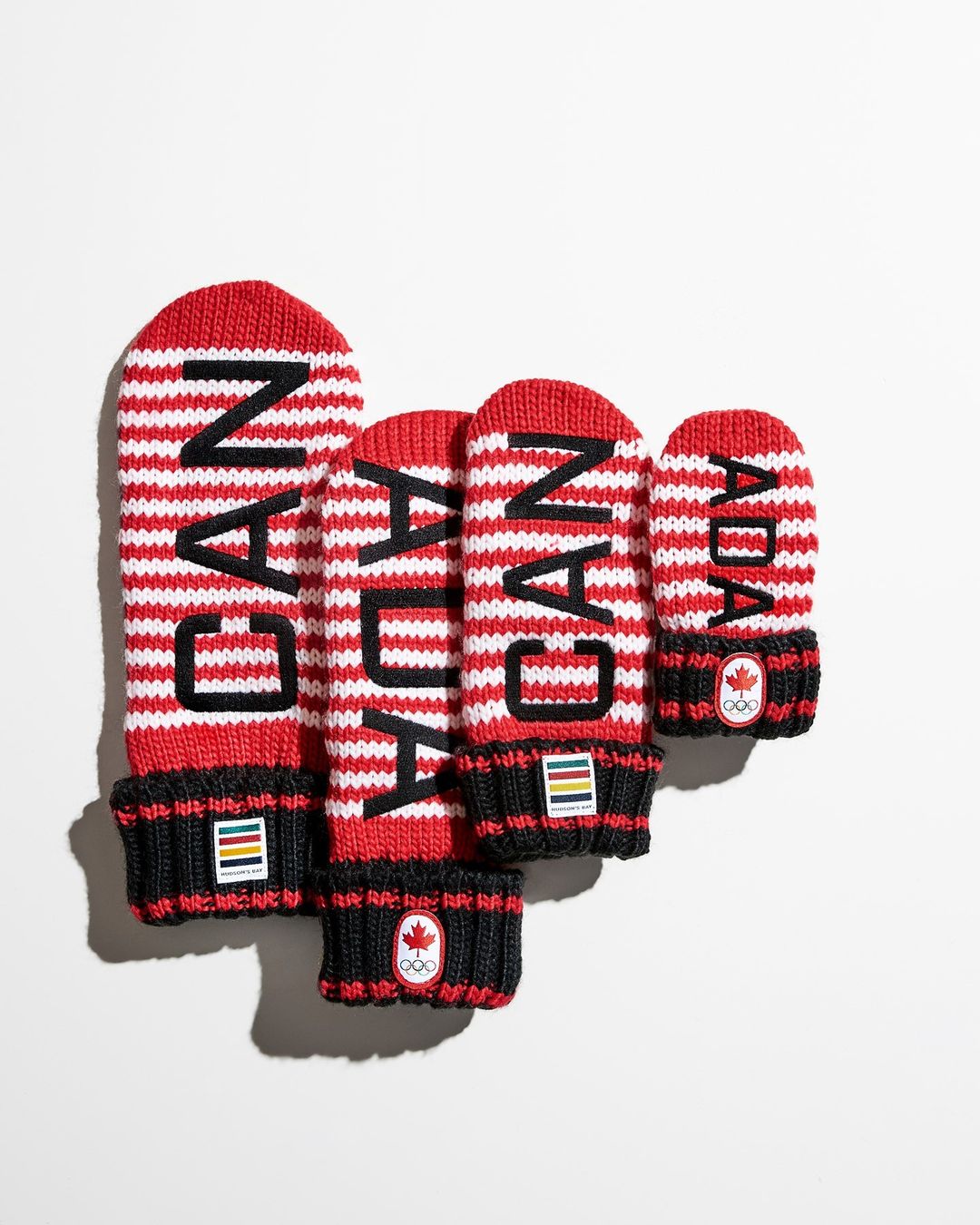
11th Anniversary edition of the Red Mittens Campaign.
Introduced by Hudson’s Bay for the 2009 Vancouver games, these mitts were originally created for Canadians to show their team pride and raise money and support Canadian athletes at the same time.
“Hudson’s Bay’s Red Mittens have made a tremendous impact as a part of our mission to help this country’s athletes live out their dreams on the world stage and inspire a nation,” says Wayne Drummond, chief merchant of Hudson’s Bay.
The Red Mittens quickly became a symbol of Canadian style and athletics; they have been brought back as a yearly tradition and have since accompanied the success of over 40 gold medals won by Team Canada. Hudson’s Bay took things further by deeming November 21 National Red Mitten Day as a way for Canadians to show support for our athletes.
Tokyo 2020

With the turn of a new decade, Hudson’s Bay collaborated with Levi’s to design a 26-piece collection that blends classic fashion staples with strong street style influences and elements of denim and jersey.
Part of a series on Canadian Fashion History. Read more HERE.

